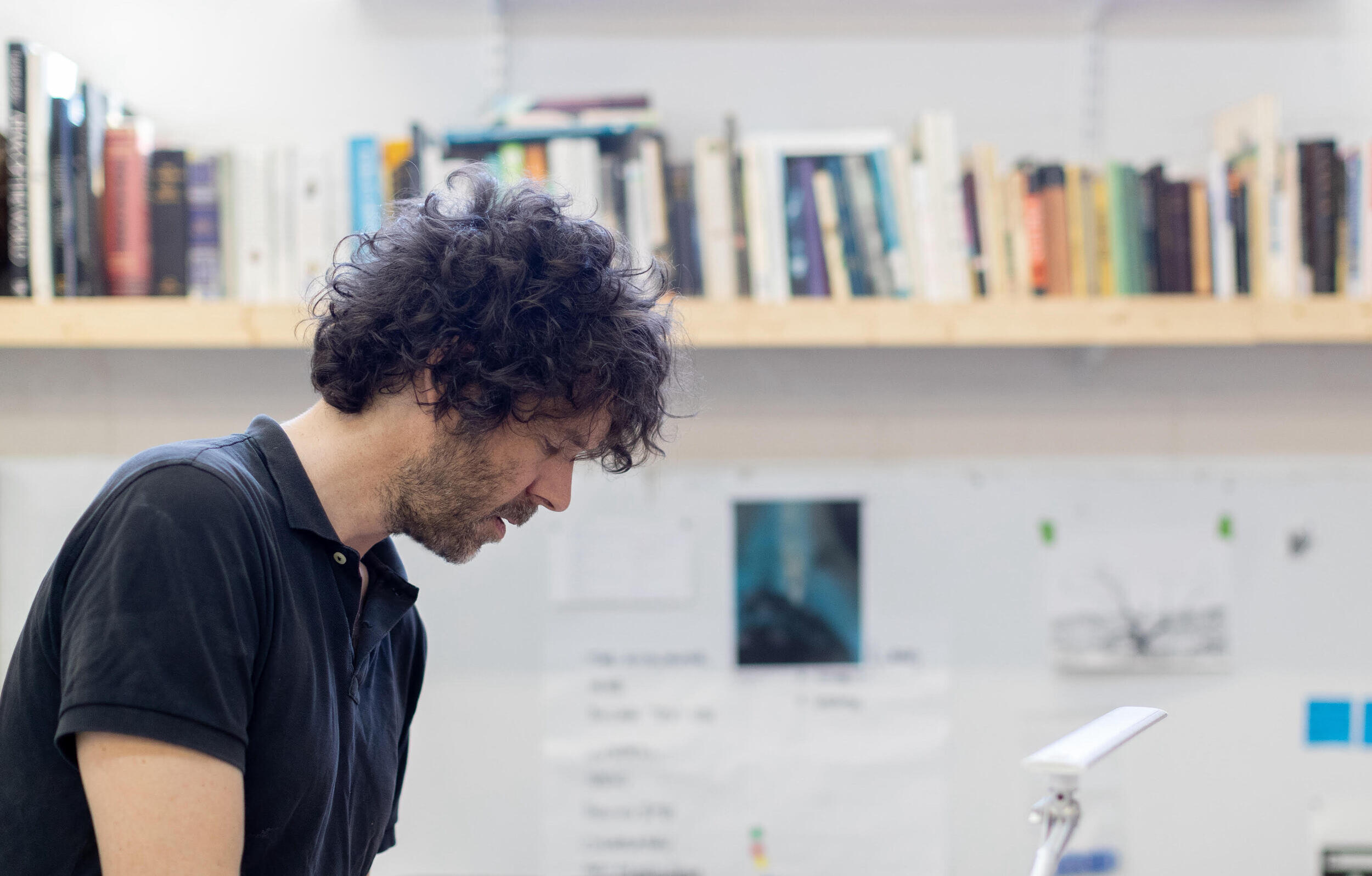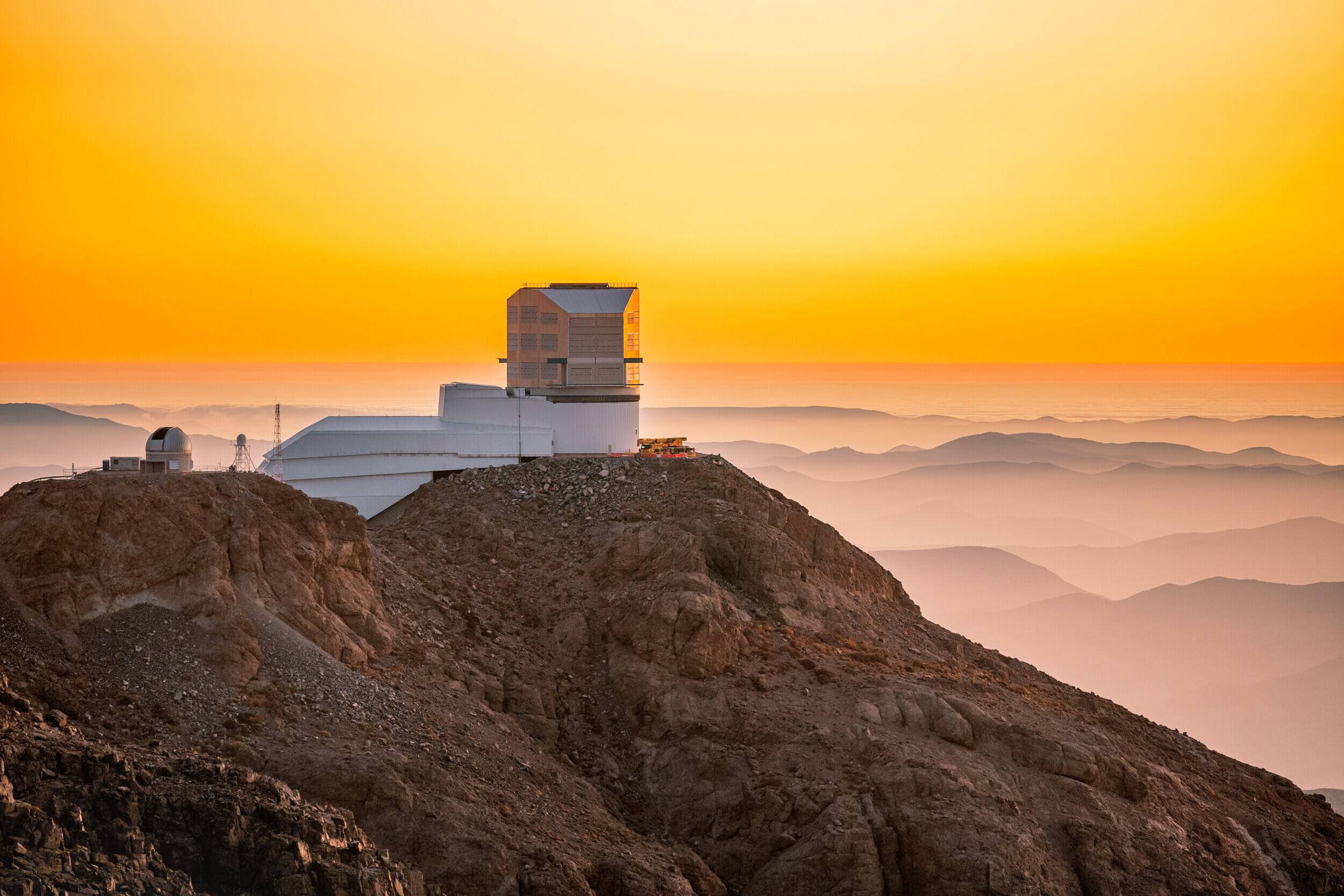In the sky above Chile, astronomy – and a VCU sculptor – are shining
By Andrew Thompson
As a cosmic observatory launched last month in Chile – unveiling the first images of what will become an unparalleled map of the universe – a Virginia Commonwealth University sculptor experienced the wonder on unique terms.
“It’s the most intense map that humans have ever imagined,” said associate professor Michael Jones McKean, who teaches sculpture at the VCU School of the Arts. “It’s a map of the cosmos.”
It’s also a prominent connection to “Twelve Earths,” a planetary sculpture designed by McKean, who is the inaugural artist-in-residence at the Vera C. Rubin Observatory. It live-streamed its first images on June 23 and will continue to scan the sky over Chile every three nights for the next 10 years, ultimately creating the most detailed and high-definition images of the cosmos to date.
The science is impressive: The Rubin features a nearly 30-foot reflecting telescope with the largest astronomical camera ever, and it will produce the largest data set created by humans – “kind of a historical way of understanding astronomy,” McKean said, with the prospect of revealing new findings.
But with the science, there’s art. McKean came across the observatory while developing “Twelve Earths,” a bold project to identify a dozen vastly different locations that – along a single geographical ring – form a circle stretching 25,000 miles around the planet, representing a sculpture of sorts of Earth itself.

McKean researched “Twelve Earths” for three years to pinpoint locations that include an impact crater, a nuclear testing ground, a primeval forest, a nearly submerged island, an open pit mine and others. Only three have been revealed so far – one is at the Rubin Observatory’s location in Cerro Pachon and Tololo, Chile – with the others slated for staggered announcement through 2029. That will appropriately mark a dozen years since “Twelve Earths” began taking formal shape in 2017.
Though formed on a planetary scale, “Twelve Earths” aims to be intimate – a framework for contemplating life and death, emergence and decay, science and nature, as well as past, present and future.
McKean, who first visited the observatory in 2019, became its artist-in-residence in 2022, in part to connect others to its impressive mission.
“I wanted to tell Rubin’s story in this really compelling, visual way,” he said.
McKean has traveled extensively since taking this position, building extended relationships through the observatory. He has spoken in Italy, Croatia and at a panel in Arkansas during a total solar eclipse in 2022.
As the first images from the Rubin become public, McKean embraces the prospects on multiple planes. The sculptor admires the grandeur, forged by billions of touches that have come together to create such a project. The educator anticipates the advances in astronomy – and incorporates lessons in his classroom.
Among them: McKean teaches his students to find connections that make projects, even as massive as the Rubin, something that can be relatable.
“I try to build connections to who we are as artists and, for my students, young artists, to what their role in the world could be,” he said. “Being an artist might seem like something small, you know, that it’s like us in a room by ourselves just working on something on top of a table. Or there’s another reality where it can be something really expensive and big, and I think that’s one thing I try to instill in my students.”

McKean has taught in the VCUarts Department of Sculpture + Extended Media since 2006, which for two decades has helped give shape to his own artistic sensibility.
“For me it shifted my whole sense of what sculpture is, how to imagine sculptural objects. Every day going to class, it’s like you’re learning that and relearning that and trying to become more clear about that,” McKean said.
And while the sculptural path of “Twelve Earths” might not emerge directly over campus, “I don’t think I would be involved in this project at all if I wasn’t if I wasn’t practicing those ideals really every day at VCU.”
Subscribe to VCU News
Subscribe to VCU News at newsletter.vcu.edu and receive a selection of stories, videos, photos, news clips and event listings in your inbox.
Latest Research & discovery
- Engineering professor develops eco-friendly method of creating semiconductor materials for electronicsCurrent industrial methods use toxic solvents and damage the environment.
- In creating an ad, using AI for scenes – but not people – may retain consumer trustVCU study points to how businesses can use artificial intelligence for efficiency without undermining the human element.
- VCU researchers identify drug candidate for curbing alcohol misusePreclinical study points to potential for a drug now being tested to treat brain disorders.
- Whose satisfaction is more important to your business? Your customers or your employees?A new study from a VCU marketing professor finds that favoring one or the other — instead of a perfect balance — may lure investors in the modern age.
- Psychologists urge an end to labeling antisocial traits as ‘dark’A VCU professor and colleagues argue in a scholarly article that the term is stigmatizing, misleading and problematic.
- VCU’s research helps power a national success storyRooted in American history, the university’s partnership – with the federal government, Virginia and private industry – is changing the world.






